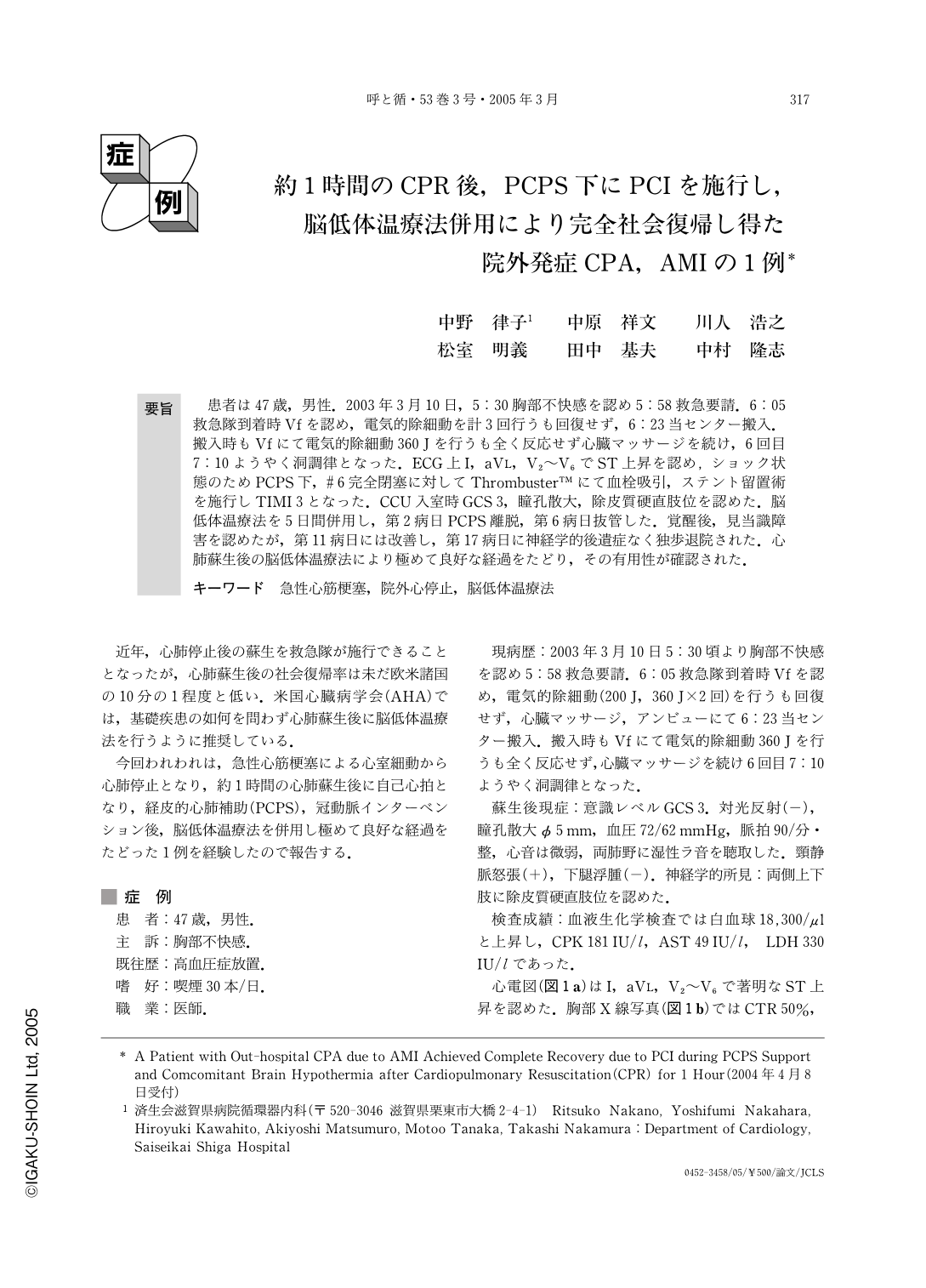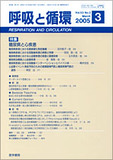Japanese
English
- 有料閲覧
- Abstract 文献概要
- 1ページ目 Look Inside
- 参考文献 Reference
要旨
患者は47歳,男性.2003年3月10日,5:30胸部不快感を認め5:58救急要請.6:05救急隊到着時Vfを認め,電気的除細動を計3回行うも回復せず,6:23当センター搬入.搬入時もVfにて電気的除細動360Jを行うも全く反応せず心臓マッサージを続け,6回目7:10ようやく洞調律となった.ECG上I,aVL,V2~V6でST上昇を認め, ショック状態のためPCPS下,#6完全閉塞に対してThrombusterTMにて血栓吸引,ステント留置術を施行しTIMI3となった.CCU入室時GCS3,瞳孔散大,除皮質硬直肢位を認めた.脳低体温療法を5日間併用し,第2病日PCPS離脱,第6病日抜管した.覚醒後,見当識障害を認めたが,第11病日には改善し,第17病日に神経学的後遺症なく独歩退院された.心肺蘇生後の脳低体温療法により極めて良好な経過をたどり,その有用性が確認された.
Summary
On March 10, 2003, a 47-year-old man requested an ambulance at 5:58 a.m. for chest discomfort starting at 5:30. When the emergency team arrived at 6:05, ventricular fibrillation(Vf) was noted, and electric defibrillation was carried out 3 times, but no improvement was achieved. The patient was brought to our center at 6:23. On arrival, electric defibrillation(360J) for Vf was also carried out, but there was no response, and heart massage was continued. The sixth electric defibrillation resulted in sinus rhythm at 7:10. An electrocardiogram(ECG) showed ST elevation in leads I, aVL, V2 to V6. During PCPS for shock, thrombus aspiration was performed using a ThrombusterTM catheter, and a stent was implanted to treat complete occlusion(#6), resulting in TIMI 3. On admission to the CCU, GCS 3, mydriasis, and decorticate rigidity of the limbs were observed. Brain hypothermia was concomitantly performed for 5 days, and PCPS was discontinued 2 days after admission. Extubation was performed 6 days after admission. After awaking, disorientation occured, but this improved 11 days after admission. The patient was discharged without neurological disability. The course was good, suggesting the usefulness of hypothermia after CPR.

Copyright © 2005, Igaku-Shoin Ltd. All rights reserved.


